Car accidents can happen in a split second and, in the process, completely change your life. If you drive regularly, then you should know exactly what to do after such an event. Here, we take a look at what to do when you’re not in the wrong, including making a car insurance claim for a ‘not my fault’ accident. Here’s a step-by-step guide. Note that if you are at fault, the process is different.
1. Don’t leave the scene without a record
To make a car insurance claim after a ‘not my fault’ accident, you often need evidence. Even if you’re in shock, don’t leave the accident scene without proof of what happened. Take photographs. Write down details of the other vehicle and its driver, including the number plate, licence number and what happened. Record statements made by witnesses.
2. Find out if making a car insurance claim not my fault is worthwhile
Most of the time, making a car insurance claim following a ‘not my fault’ accident is worthwhile. However, this is not always the case. It depends on what’s covered by your insurance policy, the level of your excess and how much damage your vehicle has copped. It’s a good idea to seek expert advice so you don’t make the wrong decision.
3. Get in touch with your insurance company immediately
Don’t dilly-dally. Most insurance policies request that you get in touch with your insurer immediately after an accident (or as soon as possible). A delay in making contact could affect your car insurance claim, even if you’re telling yourself “it’s definitely a not my fault accident”.
4. Exercise your right to drive accident replacement vehicles
After ‘not at fault’ accidents, you have every right to drive accident replacement vehicles. If your vehicle is heading in for repairs, then make sure you ask about a replacement courtesy car when you make your car insurance claim. You don’t have to settle for just any vehicle: insist on one that’s as comfortable and high-performance as the one you’ve been driving. It might not be the same make and model, but it should be of an appropriate standard.



